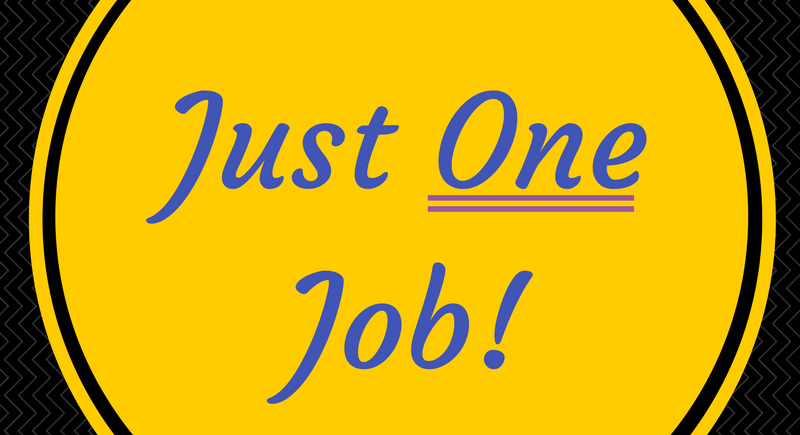
Your Resume Has ONE Job! Do It Right.
Surprisingly Simple Steps To A Killer Accountant Resume
Call it a resume. Call it a CV. It’s a sales tool.
It’s job: to help you get in front of the hiring partner. Period!
Make it clean and concise. A resume is an ad, not a user’s guide.
The hard truth is that partners DO NOT READ resumes. They skim them. The first 15 seconds is used to assess basic interest. If they’re interested, they’ll skim another 15 – 20 seconds to confirm the first impression. If confirmed, the partner will email it to another. The second partner repeats the process.
Here are simple steps to writing a dynamite resume:
- Ditch the Career Objective. That’s a given or you wouldn’t be applying for the position. Free up that resume space! It’s valuable real estate.
- Make your resume: Recent. Relevant. Readable.
Recent
- Title and job description. Provide your title, plus a detailed explanation of your duties and accomplishments. Job titles are often misleading or their function may vary from one firm to another. Your resume should tell the reader exactly what you’ve done.
- Been There. Done That. Clarify dates. Don’t leave the reader guessing where and when you were employed, or when you earned your degree. Document your work history and educational credentials accurately.
Relevant
- Define and Detail. Let the reader know the nature, size and location of your past employers. Specify some of the more technical or involved aspects of your past work or training, especially if you’ve performed tasks of any complexity or significance.
- Content & Context. Confine your information to that which is job-related. Concentrate only on subject matter that addresses the needs of the employer. For early career candidates, without much work experience, it’s fine to highlight skills which parallel those needed for success in your target job from school, sports, music, volunteer work, etc.
- Provide Proportion. Give appropriate attention to jobs or educational credentials based upon importance to the reader.
- Showcase Soft Skills. Create a section devoted to highlighting your soft skills such a leadership, communication, work ethic. These are as important as your technical skills.
- Certifications, Honors and Awards. Professional designators carry weight. List them.
- Educational accomplishments. List your degree(s), relevant course work and specialized training. Mention special honors, scholarships or awards you may have received. Include anything that will distinguish you as a leader or achiever. But, keep it brief.
- Related experience. Include anything relevant to your prospective employer’s needs. For instance, if you volunteered at a non-profit that does tax returns for seniors or if you speak more than one language let the reader know.
- Citizenship or right to work. This should be mentioned when appropriate. Dual citizenship should also be mentioned, especially if you think you may be doing international tax.
Readable
- Font Matters. Select an easy to read font such as Arial or Times New Roman. Trying what you believe to be unique or cool fonts to grab attention will just distract the reader.
- The one page rule still applies. Two max! If you write more than two pages, it tells the reader that you can’t organize your thoughts, or you’re trying too hard to make a good impression. If your content is strong, you won’t need more than two pages.
- Be Social! As in Social Media Savvy. Most all resumes are read on the computer or mobile device. Provide a link to your LinkedIn Page. Don’t have one? Take 30 minutes and create one. Let your LinkedIn site expand on your experience and skills, allowing you to keep your resume to one page.
- Check Spelling, Grammar and Punctuation. Too Err is Human, but not acceptable on a resume. Don’t rely totally on spellcheck, it doesn’t correct for using there instead of their or your instead of you’re. Create an error-free document that’s representative of an educated person.
- Stay Active! Use an active voice rather than passive. For example, say “I managed a team of 20 associates” rather than “A team of 20 associates were under my management.” Remember: if whatever is at the start of your sentence is not the one doing the action, but the one that the action is being done to, that’s a passive voice. Find the action and the actors, switch around the order and prove to your new employer how active you really are.
- Be Compatible. Save your resume as a PDF if it’s in any other format. That way, the formatting won’t get messed up when your resume is opened on a different computer.
- Write several drafts. Review and revise. Allow yourself time to review your work and proofread for errors. If you have a professional associate whose opinion you trust, by all means, listen to what he or she has to say. A well-thought, well-developed resume can mean the different between an interview and a rejection.
Want more resume and job search tips for public accountants? Check out the Career Wellness library on the SterlingFreeman website.
Need help finding a CPA firm that’s right for you? I can help. Contact me. And connect with me on LinkedIn.
